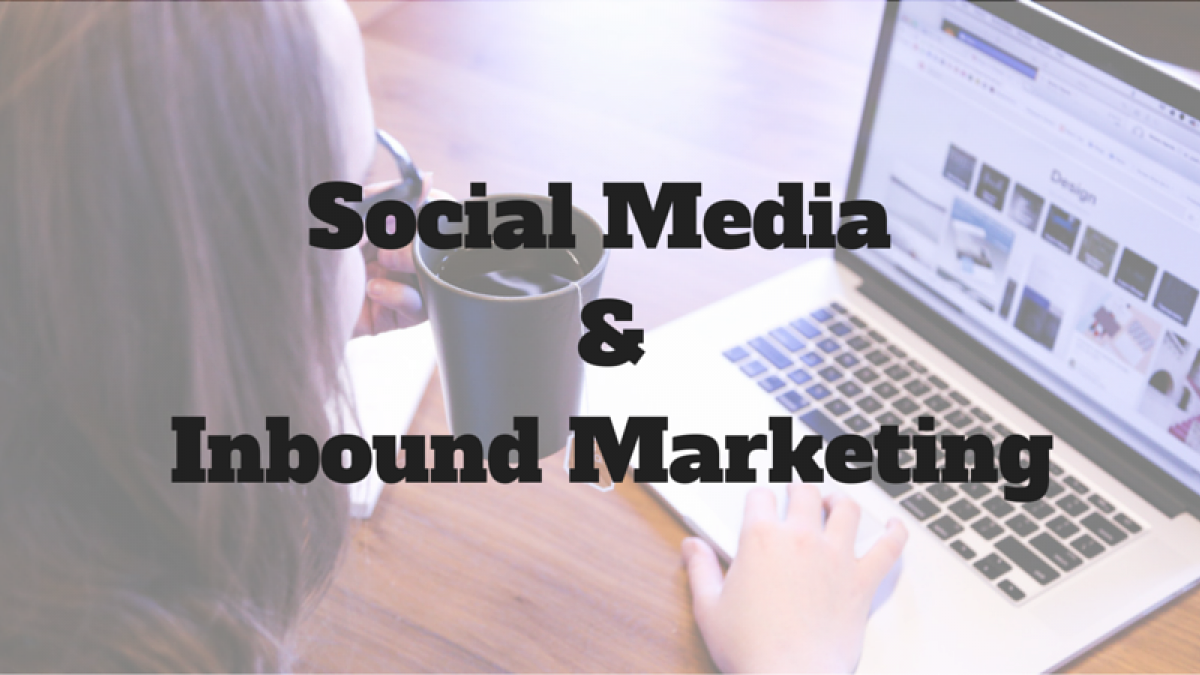
Basics of Using Social Media to Help Your Inbound Marketing Thrive
Social media is the ultimate power tool in the inbound marketer's tool box. When used effectively, social media can create invaluable opportunities for your business. It allows people to discover your brand values, story, expertise, and customer service without requiring direct contact. It also offers the chance to engage in dialogue with followers and customers to easily address questions and concerns. It is an opportunity for you to learn about your market through informal market research and social monitoring. In this post, we will go over the nuts and bolts of optimizing your social media inbound marketing efforts.
Getting Started
Creating a profile on almost any social networking platform is free, and that is the basic starting point. Your business' profile gives it a presence, and an avenue for sharing relevant content, such as industry news, video content, photos, infographics, and links to articles and blogs. It is suggested that the minimum time investment required for a small business to maintain social media presence is 2 hours per day, which equates to approximately $3,000 per month if outsourced. As you create profiles, it is important to keep the exact name of the business and graphics consistent across platforms, so that it is easily recognizable. Be careful not to over-commit to more social media than you have the resources to keep up-to-date. So, which social media networks should you utilize?
- LinkedIn builds networks between businesses and professionals and is a must for small businesses and start-ups. LinkedIn enables you to participate in industry-based discussions, stay connected with potential partners, customers, and employees, and publicize updates about your company. It is also an opportunity to improve your SEO rankings with your LinkedIn profile.
- Facebook, Twitter, and Google+ have the broadest reach. With Facebook's 1.55 billion (!) active monthly users, it is almost as important to be on Facebook as it is to have a company website. All of these platforms offer high-visibility and opportunities for engagement with followers. This is where people are more likely to seek information, and where you can expand your exposure to followers and friends of followers through 'Likes' and 'Retweets.'
- Instagram, Pinterest, and Tumblr are also popular, but consider whether your product or service is a good match for each platform. All of these require plenty of visually interesting content. They are useful for storytelling, sharing brand personality, and posting tutorials or other video content.
- Niche social networks exist for practically every industry, and having a company profile on these networks is the perfect way to reach a passionate, like-minded audience. Niche networks should be used to engage with the community, expose your brand, learn from members, and establish yourself as an expert in your field. Sales pitches and advertisements should be minimal. A few examples include Curbly for DIY enthusiasts, Dribbble for "show and tell" among graphic designers, and PatientsLikeMe for connecting people with similar health issues. To find niche networks that capture your target audience, explore this list.
Researching and Social Monitoring
Social media networks give inbound marketers several ways to better understand their target market, thus making it easier to develop and share content that is well-received. Watch for common topics among followers. What are the frequently mentioned compliments and complaints? These trends can be researched through general social media discussions, customer reviews on Facebook, Yelp, or retail sites. A Google hashtag search will show you how often a tagged topic is being posted on Twitter, Instagram, and other platforms, and give you a window into people’s honest thoughts and opinions. Or, you can utilize a hashtag tracking tool. Discussions on Quora and Reddit can also provide insight into what kind of content users are sharing and discussing. You can also simply post a poll querying what followers are interested in. Delivering original inbound marketing content on trending topics differentiates your business from your competitors, establishes you as an expert, and engages target markets.
Engaging
Where most marketing tools are one-sided, social media is an opportunity for two-way conversations. Engaging on a personal level by responding to questions and comments can begin to build trusting relationships with potential leads. And where these conversations are visible to others, there is potential to display your stellar customer service, values, and expertise. (Keep in mind that this visibility can work against you if your social media team is not promptly and thoughtfully addressing customer concerns).
Engaging on a broader level on social media can be done by balancing your more focused content with less formal or tangential posts that engage followers. Sharing a photo of a candid moment in the office, or congratulating an employee on fundraising for a charity, for example, personalizes your business. It helps people realize that there are real people behind your company profile, not just regularly scheduled marketing propaganda.
We have covered the basics of how social media networks can bolster inbound marketing efforts. There are hundreds of more specific social media strategies that can be implemented. What has worked for your company?

